Briards are a medium to large breed with a robust and athletic build. Most weigh 48 to 97 pounds and stand 22 to 27 inches tall, with most males being larger than females.
Briard
Breed Type: Herding
Common nicknames: Berger de Brie, Berger Briard
Coat: Double, wavy
Hypoallergenic: No, they will likely trigger allergies.
Temperament: Affectionate, loyal, smart, independent
Life expectancy: 10-12 years
Color & patterns: Tawny

The Briard dog breed is famous for being fiercely loyal and smart, which makes it a great choice for anyone seeking an affectionate and intelligent pup. With their long, shaggy coats, they are often compared to Chewbacca, and, like Chewie, they are always up for an adventure. Briards are known for their intelligence and versatility, excelling in roles such as herding, guarding, and even as therapy dogs. While they can be independent thinkers, they are also highly trainable with consistency and positive reinforcement. If you’re looking for a faithful sidekick, the Briard might be the breed for you.
Briard characteristics
Learn about about Briard basics like their fur colors, shedding levels, how much grooming they need, and other Briard facts.
Average height
22-27 inches (55.9-68.6cm)
Average weight
48-97 pounds (21.8-44.0 kg)
Average lifespan
10-12 years
Exercise needs
Grooming needs
Full-grown size
Good with cats
Good with kids
Training aptitude
Do Briards have fur or hair?
Briards have hair, not fur. Briards have a double coat with a dense undercoat and a longer topcoat with a shaggy appearance.
When do Briards stop growing?
Briards stop growing around 18 to 24 months of age. While they may be physically mature by 18 months, Briards retain a playful energy well into their second year and beyond. Regular exercise and proper nutrition are important throughout their growth to ensure healthy development.
What colors do Briards come in?
Briards come in a variety of coat colors, including black, tawny, and gray.
Do Briards shed?
Yes, Briards shed, but their shedding is minimal. Their hair usually gets caught in their long outer coat rather than all over the house and furniture.
Briard temperament
Learn about about the Briard temperament and how well they fit into your lifestyle, home environment, and family.
Are Briards good with cats?
Briards can live peacefully alongside cats, but you might also find they like to give chase to them. Of course, each dog (and cat) has their own preferences and temperament, but you can feel fairly confident your Briard, if properly socialized to your cat and/or introduced at a young age, should get along well.
Do Briard dogs bark a lot?
No, Briards don’t bark a lot. With their strong guarding instincts, Briards bark to alert their families to strangers or unusual activity, but they are not indiscriminate, nuisance barkers. As with any dog, they can be discouraged from barking as frequently with proper training and exercise.
Are Briards good family dogs?
Yes, Briards make marvelous family companions. Known as “hearts wrapped in fur,” they are affectionate, loyal, devoted dogs who are highly intelligent and love to please. They do have an independent streak that demands strong boundaries and need a lot of exercise, so frequent runs or romps off-leash are necessary.
Are Briards easy to train?
Briards are very intelligent animals with a penchant for pleasing their families and, thus, are highly trainable. They do need to have stimulating training sessions and plenty of positive reinforcement.
Are Briards smart?
Yes, Briards are smart dogs. Their strong work ethic, problem-solving skills, and ability to learn new skills quickly are all signs of their intelligence. Briards also display social intelligence in their abilities to read human emotions and express empathy with their families.
Are Briards high maintenance?
Yes, Briards are a touch high-maintenance. Their long, thick coats require consistent care, and their high exercise needs could be high-maintenance for some families. This dog does well in a family that will be happy to play and spend time together.
Do Briards make good service dogs?
Yes, Briards make good service dogs. Their intelligence, strong work ethic, and trainability are all assets in service roles. This breed is also loyal, adaptable, and can remain calm and composed in crowded public settings.
Are Briards good with kids?
Yes, Briards are good with kids. The Briard’s playful energy is a perfect match for the youthful exuberance of children, while also being a patient and gentle breed.
As with any breed, it is recommended that your child is always supervised when interacting with your dog to keep both the child and dog safe. Teaching children how to properly approach and handle dogs is crucial to ensure positive experiences for both the dog and the child, as is teaching dogs how to interact gently with children.
Briard health
Learn about about the Briard health outlook and what diseases they may be prone to at various stages of their life.
Do Briards have a lot of health problems?
Briards are a healthy, rugged breed overall, but like any dog, they can be prone to certain health issues.
What diseases are Briards prone to?
Briards are prone to diseases including:
Hip and/or elbow dysplasia: Hip and elbow dysplasia are two of the most common skeletal diseases seen in dogs. They are similar diseases in which either the hip or elbow joint has grown abnormally or is misshapen. The abnormal shape prevents the joints and sockets from adequately meeting one another, resulting in rubbing and grinding instead of sliding smoothly. Though the main complication with hip dysplasia is joint instability, the abnormalities present in elbow dysplasia often result in pieces of bone and/or cartilage breaking loose and irritating the joint tissues. Over time, the rubbing from dysplasia can cause a variety of issues, such as pain, lameness, and secondary osteoarthritis. Surgery can fix the joint if diagnosed before the onset of arthritis. If you are rescuing a Briard, have them checked out by a vet to see if they are prone to dysplasia.
Eye issues: Stationary night blindness; cataracts, a common eye condition that causes cloudiness in the eye and obstructs vision; and progressive retinal atrophy (PRA), a progressive degenerative disease affecting the retina that eventually leads to blindness.
Von Willebrand disease: Von Willebrand's disease (vWD) is the most common inherited bleeding disorder seen in dogs. It happens when a dog does not produce enough of a specific protein that helps the blood cells used in clotting stick together. This results in dogs that are unable to clot properly and could cause hemorrhages or other bleeding issues. The deficient protein is called von Willebrand factor (vWF).
Hypothyroidism: This thyroid malfunction results in low hormone production and could cause obesity, low energy, and a brittle coat.
Gastric dilatation-volvulus: This is a sudden, painful, and life-threatening swelling and twisting of the abdomen.
To identify some of these issues, a veterinarian may recommend hip, eye, and imaging tests.
Are Briards hypoallergenic?
No, Briards are not hypoallergenic. (No dog is!) Briards have a long, shaggy coat that produces dander, which can trigger allergies in sensitive individuals. If you’re interested in bringing a Briard home, spend time with one before moving them in for good to see how you react.
Where can I adopt a Briard?
The easiest way to adopt a Briard would be through a rescue that specializes in Briards. A great place to start is to create a breed search on Adopt a Pet. The search will show you all the available Briards in your area.
Do you need to groom a Briard?
Yes, you need to groom a Briard — and often. Briards need to be brushed almost daily, as their shedded hair can become easily tangled and matted in their outer coat. Additionally, brushing teeth helps prevent dental problems such as tartar buildup, gingivitis, and bad breath. It’s recommended to brush your dog’s teeth at least a few times a week.
Briard history
Learn about where this Briard came from!
How rare are Briards?
Yes, Briards are rare compared to more common dogs in the United States. Their rarity is mainly geographical. This breed is more commonly found in France and a few other European countries than in North America.
Where are Briards from?
Briards are from France. The beloved Briard is one of the country’s oldest herding breeds with a history stretching back centuries. The breed has appeared in paintings and tapestries, historical documents, and the writings of the Enlightenment philosopher Voltaire, who was a fan.
How long do Briards live?
Briards live around 12 years. Individual lifespans will vary based on genetics, overall health, diet, exercise, and quality of veterinary care.
Popular Briard mixes
Breeds that are commonly mixed with Briards include:
Bridoodle (Briard + Poodle)
Afaird (Briard + Afghan Hound)

Find Briard puppies near you
Adopting a Briard
We don't see any Briards available for adoption in your exact location or cities near you, but here are some adorable similar breeds in Columbus, OH.
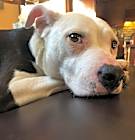
Penny
American Pit Bull Terrier Mutt
Female, adult
Westerville, OH
Not good with dogs
Not good with cats
House-trained
Spayed or Neutered
Shots are up-to-date
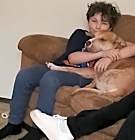
Lucky
Mutt Labrador Retriever
Male, adult
Westerville, OH
Good with dogs
Not good with cats
House-trained

Barry
Shih Tzu Bichon Frise
Male, 5 yrs 9 mos
Westerville, OH
Not good with dogs
Not good with cats
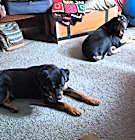
Henry and Raaz
Rottweiler
Male, adult
Westerville, OH
Not good with dogs
Not good with cats
Needs experienced adopter
House-trained
Spayed or Neutered
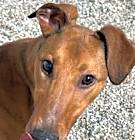
Pudge
Greyhound Hound (Unknown Type)
Female, 3 yrs 7 mos
Westerville, OH
Not good with dogs
Not good with cats
Spayed or Neutered
Shots are up-to-date
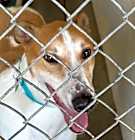
Woody
Greyhound Hound (Unknown Type)
Male, adult
Westerville, OH
Good with dogs
Not good with cats
Spayed or Neutered
Shots are up-to-date
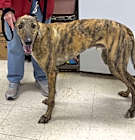
Reacher
Greyhound Hound (Unknown Type)
Male, 3 yrs 6 mos
Westerville, OH
Good with dogs
Not good with cats
Spayed or Neutered
Shots are up-to-date
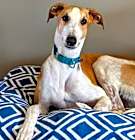
Pepper Jack
Greyhound Coonhound (Unknown Type)
Male, 2 yrs 6 mos
Westerville, OH
Good with dogs
Not good with cats
House-trained
Spayed or Neutered
Shots are up-to-date

Penny
American Pit Bull Terrier Mutt
Female, adult
Westerville, OH
Not good with dogs
Not good with cats
House-trained
Spayed or Neutered
Shots are up-to-date

Lucky
Mutt Labrador Retriever
Male, adult
Westerville, OH
Good with dogs
Not good with cats
House-trained

Barry
Shih Tzu Bichon Frise
Male, 5 yrs 9 mos
Westerville, OH
Not good with dogs
Not good with cats

Henry and Raaz
Rottweiler
Male, adult
Westerville, OH
Not good with dogs
Not good with cats
Needs experienced adopter
House-trained
Spayed or Neutered

Pudge
Greyhound Hound (Unknown Type)
Female, 3 yrs 7 mos
Westerville, OH
Not good with dogs
Not good with cats
Spayed or Neutered
Shots are up-to-date

Woody
Greyhound Hound (Unknown Type)
Male, adult
Westerville, OH
Good with dogs
Not good with cats
Spayed or Neutered
Shots are up-to-date
